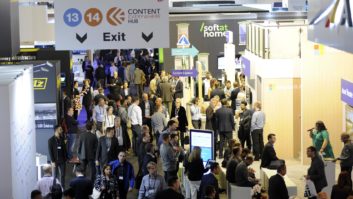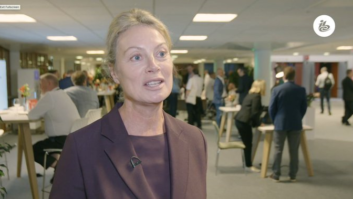
IBC2017 opens Sept. 14 in Amsterdam. We’re checking in with exhibitors about their plans.
Wendell Lonergan is head of broadcast sales for Nautel Ltd.
Radio World: What are you hearing from your customers about their business outlook this year?
Lonergan: While the European economy has been improving over the last four years, the growth has been slow and investors have been cautious. The expectation is that growth in the European broadcast industry will be flat. We are seeing an interesting growth in MW inquiries particularly for higher-power applications. These broadcasters are seeking high efficiency, high reliability and sophisticated diagnostics built into the equipment. Compatibility with DRM30 is always requested.
We continue to see slow return of investment in broadcast transmission infrastructure by oil-producing countries in the Middle East, following drastic budget cutting after crude prices dropped precipitously in 2014. War and political instability have also been factors, although opportunities may present themselves for countries that will need to rebuild damaged or destroyed networks. Radio is an effective tool in the struggle against violent extremism, and the need exists to inform local and displaced populations as disruption moves across borders and regions.
We also continue to see opportunity in high-power government MW projects in Africa and the Middle East. These opportunities often take the form of large-scale, tendered turnkey projects, with civil, electrical and other peripheral works. These public broadcasters are looking for financially stable manufacturers with strong local support and industry partnerships to carry out lengthy deployments, and are finding fewer such options to choose from these days. These investments almost always plan for DRM capability or adaptability, with the expectation that affordable DRM receiver manufacturing is somewhere in the horizon.
As more local and community FM stations appear throughout Africa, new broadcasters are looking for simple, easily maintained units that are both affordable and highly reliable in the most extreme environmental and electrical circumstances.

Shown are parts of the NX Series 2 MW transmitter Nautel built for Antenna Hungária.
RW: What technology priorities or issues are most on the minds of your European and other international clients as they come to IBC in 2017?
Lonergan: Technologies that affect the bottom line for the broadcaster are top of mind. Efficient amplification reflects in the operating costs. This is often calculated over the life of the equipment to validate the ROI expectations. Simplicity of installation and troubleshooting using the transmitter reporting features is important to keep engineering efforts to a minimum. Technologies like redundant program sources and “soft fail” architecture help ensure the equipment is always on the air providing revenue.
RW: What new or recent products will you feature?
Lonergan: Nautel will showcase our NVLT, GV and VS series of FM transmitters as well as our NX series MW transmitters which are featured in a 2 MW system we are currently installing in Hungary. Customers should visit our booth — Hall 8 C49 — to discuss our latest feature set, large project implementation, and progress of DRM technologies. We will host Ruxandra Obreja, the Digital Radio Mondiale Consortium chairman, and with her discuss the current status of DRM from a global perspective.
RW: Nautel has shipped 33 high-power DRM-enabled medium-wave transmitters to All India Radio — a massive project, described as the largest digital broadcasting system in the world. What’s the takeaway, particularly for broadcasters in other countries, about the possible direction of digital radio technology?
Lonergan:We are proud to have been part of this successful deployment of DRM30 broadcast equipment in India. Through careful management of the program with our engineering staff and project managers, and the informed and cooperative people at AIR we see an implementation that can be the paradigm for other countries wishing to launch DRM30 technologies.
RW: What else should readers know about recent global radio trends?
Lonergan:Terrestrial radio is very much alive and providing a vital service to millions of listeners. The IBC is a venue where broadcasters can see all the latest technologies from microphone to antenna empowering them to make effective purchase decisions.












